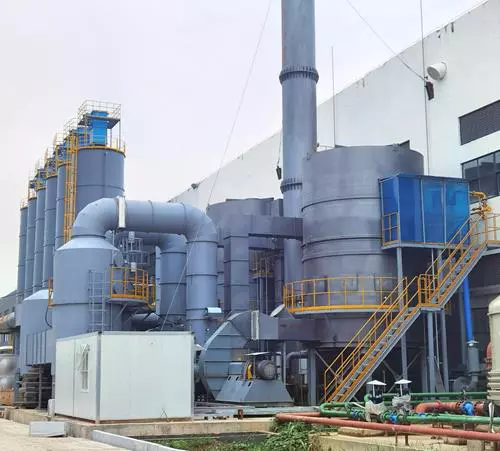What are the key factors in RTO thermal oxidizer media selection?
Introduction
Regenerative Thermal Oxidizer (RTO) is a proven technology for air pollution control. It is an effective way to control volatile organic compounds (VOCs) and hazardous air pollutants (HAPs) from industrial processes. However, to achieve optimal performance, the selection of RTO media is critical. In this article, we will discuss the key factors in RTO thermal oxidizer
media selection.
Temperature Resistance
One of the critical factors in RTO media selection is temperature resistance. The media used in RTO must be able to withstand high temperatures. The typical operating temperatures for RTO are between 1500¡ãF to 1800¡ãF. Therefore, the media must be able to withstand these high temperatures without melting or degrading. The most commonly used media for RTO is ceramic, which can withstand temperatures up to 2000¡ãF. Ceramic media is also durable and can last for many years, making it an excellent choice for RTO applications.
Pressure Drop
Pressure drop is another critical factor to consider in RTO media selection. Pressure drop is the resistance to airflow caused by the media. The higher the pressure drop, the more energy is required to operate the RTO system. Therefore, it is essential to select media with low pressure drop to minimize energy consumption. The pressure drop is affected by the shape, size, and density of the media. Honeycomb-shaped ceramic media is commonly used in RTO applications due to its low pressure drop.
Chemical Resistance
The RTO media must be chemically resistant to the process gases being treated. The process gases may contain corrosive compounds that can degrade the media over time. Therefore, it is important to select media that can withstand exposure to these compounds without degrading. Ceramic media is typically resistant to most chemicals and is an excellent choice for RTO applications.
Particle Size Distribution
The particle size distribution of the media is also an essential factor in RTO media selection. The ideal media should have a uniform particle size distribution to ensure even airflow distribution. Uneven airflow distribution can lead to hotspots and reduce the overall efficiency of the RTO system. Honeycomb-shaped ceramic media is an excellent choice for RTO applications because it has a uniform particle size distribution.
Conclusion
In conclusion, selecting the right media is critical to the performance of RTO thermal oxidizer systems. The media must be able to withstand high temperatures, have a low pressure drop, be chemically resistant, and have a uniform particle size distribution. Honeycomb-shaped ceramic media is a common choice for RTO applications due to its excellent temperature resistance, low-pressure drop, chemical resistance, and uniform particle size distribution.

Company Introduction
We are a high-end equipment manufacturing enterprise specializing in the comprehensive treatment of volatile organic compounds (VOCs) emissions and carbon reduction energy-saving technology. Our core technologies include thermal energy, combustion, sealing, and self-control. We have the capabilities for temperature field simulation, air flow field simulation modeling, ceramic heat storage material performance, molecular sieve adsorption material selection, and high-temperature incineration oxidation testing of VOCs organic compounds.
Team Advantages
Our RTO technology research and development center and waste gas carbon reduction engineering technology center are located in Xi’an, and we have a 30,000 m2 production base in Yangling. We are a leading manufacturer of RTO equipment and molecular sieve rotor equipment worldwide. Our core technical team comes from the Aerospace Liquid Rocket Engine Research Institute (Aerospace No. 6 Institute). We currently have more than 360 employees, including over 60 research and development technical backbones, including 3 senior engineers at the research level, 6 senior engineers, and 145 thermodynamics doctors.
Core Products
Our core products include the rotary valve regenerative thermal oxidizer (RTO) and molecular sieve adsorption concentration rotor. With our expertise in environmental protection and thermal energy system engineering, we can provide customers with comprehensive solutions for industrial waste gas treatment and carbon reduction through heat energy utilization.

Certifications, Patents, and Honors
- Intellectual Property Management System Certification
- Quality Management System Certification
- Environmental Management System Certification
- Construction Industry Enterprise Qualification
- High-tech Enterprise
- Patent for Rotary Valve Regenerative Thermal Oxidizer
- Patent for Rotary Heat Storage Incineration Equipment
- Patent for Disc Molecular Sieve Rotor
Choosing the Right RTO Equipment
- Determine the characteristics of the exhaust gas
- Understand local regulations and emission standards
- Evaluate energy efficiency
- Consider operation and maintenance
- Budget and cost analysis
- Select the appropriate RTO type
- Environmental and safety considerations
- Performance testing and validation
Understanding the composition and quantity of VOCs in the exhaust gas to select appropriate media for the RTO.
Ensure compliance with local environmental regulations and emission standards when selecting RTO equipment.
Analyze the energy consumption and efficiency of different RTO options to maximize energy savings.
Assess the ease of operation, maintenance requirements, and lifespan of the RTO equipment.
Analyze the initial investment, operating costs, and long-term benefits to determine the most cost-effective option.
Choose between different RTO designs based on the specific needs of the application and the exhaust gas characteristics.
Ensure that the selected RTO equipment complies with environmental and safety standards.
Conduct thorough performance testing and validation of the selected RTO equipment to ensure its effectiveness.

Service Process
- Consultation and evaluation
- Design and solution development
- Production and manufacturing
- Installation and commissioning
- After-sales support
Provide initial consultation, conduct on-site inspections, and analyze customer requirements.
Create customized solutions through design, simulation, and solution review.
Customize production, ensure quality control, and conduct factory testing.
Perform on-site installation, commissioning, and provide training services.
Offer regular maintenance, technical support, and spare parts supply.
We are a one-stop solution provider with a professional team dedicated to tailor-made RTO solutions for our customers.
Author: Miya
